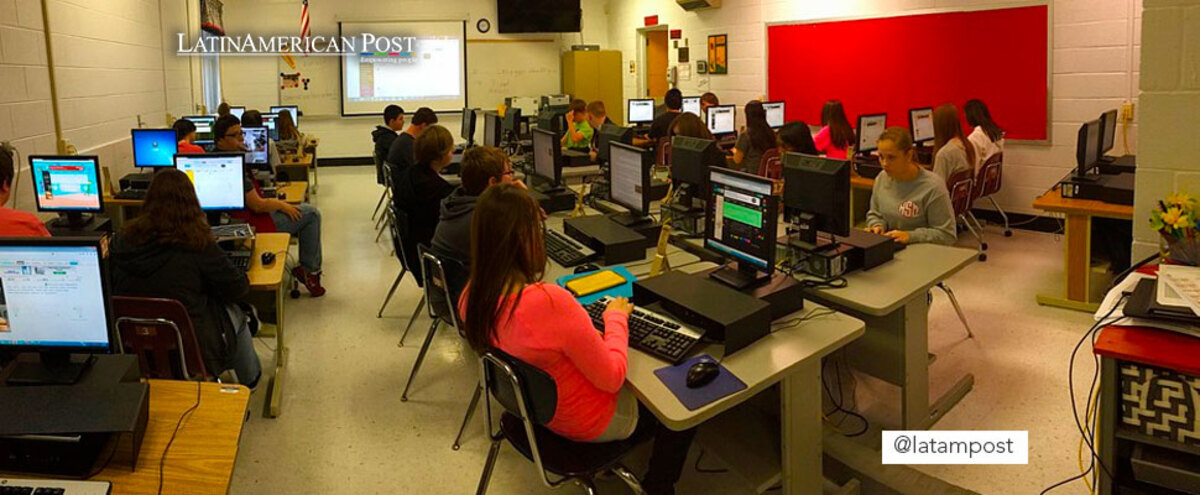Latin America Will Not Reach Its Education Goals, According To The UN
According to a report by UNESCO, Unicef and ECLAC, there are still some negative trends that could slow down educational improvements in the region, with COVID-19 as the protagonist .

Photo: Pixabay
LatinAmerican Post | Christopher Ramírez
Escucha este artículo
Leer en español: América Latina no alcanzaría las metas de educación para el 2030, según la ONU
As recalled by an article hosted on the official website of the United Nations Organization (UN), almost seven years ago (September 25, 2015), a list of global goals was agreed for 2030 that aims to "eradicate poverty, protect the planet and ensure prosperity for all as part of a new sustainable development agenda”. Sustainable Development Goal 4 (SDG4) is the most important: quality education.
The idea, according to the same organization, is that within eight years "inclusive, equitable and quality education" will have been guaranteed, in addition to "promoting lifelong learning opportunities for all."
“Education enables upward socioeconomic mobility and is key to getting out of poverty. Over the past decade, great progress has been made in expanding access to education and school enrollment rates at all levels, especially for girls.
Even with these efforts, the international organization assures that for 2018 there were figures that were not encouraging and that experts began to question whether SDG4 could be achieved in 2030.
According to official numbers, reported by the United Nations Office for Culture, Science and Education (Unesco), "around 258 million children and young people do not attend school"; data that was broken down as follows: 59 million children who should be in primary school, 62 million who were of the age to be in lower secondary school and 138 million adolescents who should be in upper secondary school.
Crisis in education in Latin America
Now, the crisis within educational plans in the world has a key protagonist who helped slow down the mission contained in SDG4: the COVID-19 pandemic. For the UN, this health crisis also led to others of a political, social, cultural, economic and, of course, educational nature.
“In 2020, as the COVID-19 pandemic spread across the globe, most countries announced temporary school closures, affecting more than 91% of students globally. In April 2020, nearly 1.6 billion children and young people were out of school. Likewise, about 369 million children who depend on school canteens had to seek other sources of daily nutrition,” added the UN.
However, there is something that 'The crossroads of education in Latin America and the Caribbean. Regional monitoring report SDG4-Education 2030', a study developed by UNESCO in partnership with the United Nations Children's Fund (UNICEF) and the Economic Commission for Latin America and the Caribbean (ECLAC), makes very clear: America Latin America, and the Caribbean are one of the regions that have been most affected by COVID-19 and its adverse effects on education.
In fact, according to the report, if it continues along the path it is taking today, it would be very difficult for this region to achieve the UN's SDG4 by 2030.
"The evidence shows some positive news, but it reinforces the urgent need for greater investment and state capacities to lead the processes of improvement and systemic transformation of education to accelerate progress in the educational goals established in 2015," said Claudia Uribe, director of the Regional Office of Education for Latin America and the Caribbean (Oreal/Unesco Santiago)
Among the positives, the report clarifies that since 2012 illiteracy has been dealt a direct blow, reducing this problem by 7.7 million people in the region; even so, there is still a group of 12.8% that suffers from this social condition in rural areas.
In addition, there is also talk of an increase of 2.1 million boys and girls between the ages of zero and two who could be enrolled in what is known as "pre-primary education." There was also a decrease in “the proportion of students older than expected ages”, both for the primary and secondary levels: from 14.4% to 7.8% between 2000 and 2020 for the first item, and from 18% to 13% between 2010 and 2020 for the second.
"However, since the beginning of the pandemic, we have observed how early childhood has not been prioritized, which puts these advances at risk," said Rada Noeva, Deputy Regional Director in charge of the UNICEF Regional Office for Latin America and the Caribbean (UNICEF Lacro).
You can also read: Disability in Latin America: How Adapted is the Region for this Population?
Under this aspect, the report concludes with some not-so-positive trends with a view to obtaining SDG 4 within eight years:
1. There is a slowdown in some specific indicators, such as the rate of completion of secondary education, which had improved considerably before the pandemic.
2. There is a stagnation "in key indicators of access to primary and secondary education and in evaluations of the quality of learning," according to the report. In short, in the last three years it has not been possible to reduce the percentage of children and adolescents who do not attend school in Latin America and the Caribbean.
3. There is evidence of an increase in some gaps at the tertiary level of education (university) with very slight increases in the rural sector compared to the urban sector, as well as between men and women. In the latter case, the document clarifies that by 2020 there was a clear difference with 61.7% of women accessing this education against 46.8% of men who could enroll.




